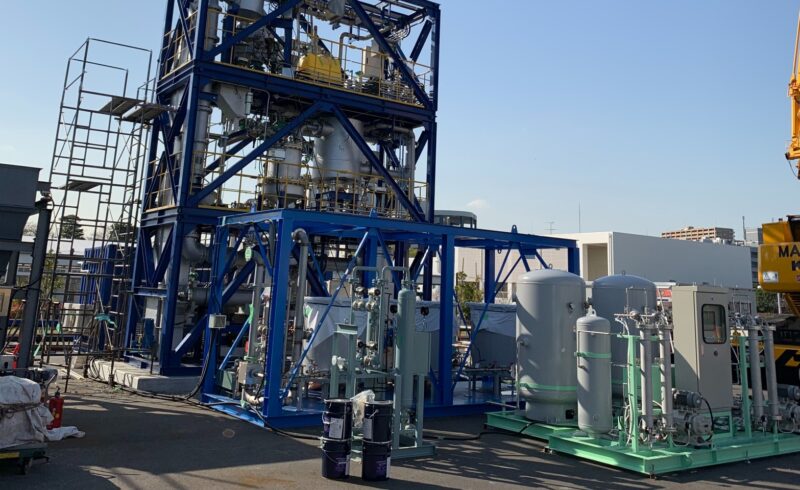
Janet Miranda for ICIS News covers our press release JBEC’s Tokyo facility launch.
Janet Miranda | ICIS | March 30, 2021
HOUSTON (ICIS)–Ways2H, a joint venture from Clean Energy Enterprises and Japan Blue Energy, could carveout a specific space in the flourishing hydrogen market, CEO Jean-Louis Kindler said.The renewable hydrogen systems manufacturer announced on Tuesday that it and its shareholder JapanBlue Energy have completed construction of a demonstration facility in Tokyo, Japan that will convert sewage sludge into renewable hydrogen fuel for fuel cell mobility and power generation.The waste-to-hydrogen plant is at the Sunamachi Water Reclamation Center near Tokyo Bay, and will process1 tonne of dried sewage sludge per day to generate 40-50kg of hydrogen per day.Ways2H plans to start ramping up operations by mid-2021.It is this proximity to the feedstock which Kindler says could differentiate the company from other hydrogen production systems, as it could locate facilities near wastewater treatment plants or municipal waste treatment plants, even using medical waste processing facilities to install this system near hospitals.“Our solution is able to address different markets,” Kindler said. “We want to demonstrate that our solution isa suitable replacement as an alternative to the current waste solutions which are landfill and incineration.”The process Ways2H uses to make hydrogen can use sewage sludge or municipal solid waste as feedstock.The waste is heated at high temperatures and converted into gas, from which pure hydrogen is extracted.The facility is carbon neutral and generates its own fuel in a closed loop process.If paired with carbon capture and storage technology, the process of making renewable hydrogen could even be carbon negative, according to Kindler.Ways2H’s renewable hydrogen production process could create another solution for the emerging hydrogen economy, as the energy industry moves into cleaner fuels.Traditionally, hydrogen is made from natural gas via steam methane reforming, which produces blue hydrogen. Green hydrogen, by contrast, is made via electrolysis, breaking down the water molecule using renewable electricity.“We don’t see ourselves as being competitors to green hydrogen, but we do bring a complementary production solution that uses renewable sources,” said Kindler.Kindler said the hydrogen market will only continue to grow as logistical challenges are solved, and the full potential of hydrogen could be unlocked.Ways2H is already in commercial discussions with a company in California. This project would be its first large-scale commercial system for hydrogen production.
It is expected to be operational by 2024.
The company is also in advanced discussions with potential users and operators in the US and Europe.Interview article by JanetMiranda